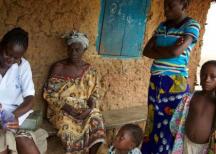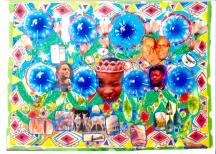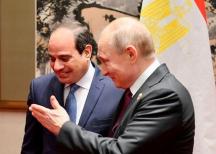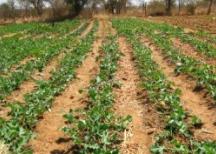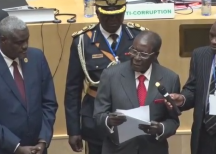In May the ruling party claimed to have won an incredible 100 per cent of the seats in a country that has nearly 80 political parties that contested the elections. And the regime’s allies around the world keep churning out reports of rapid economic development – while turning a blind eye to the widespread repression by the dictatorship.
The new Ethiopian parliament was officially opened on Monday, 5 October, 2015. The best depiction that can capture the essence of this new parliament is its paramount role in the consolidation of electoral authoritarianism in Ethiopia. The parliament got its mandate from a regular election that was held on 24 May 2015. The election happened in a context where the ruling party massively manipulated state resources and institutions and established structures of political control down to each household level especially in the rural areas. There were also substantiated cases of harassment, intimidation, imprisonment and extra-judicial killings of opposition party members including candidates both in the pre- and post-election period. As a result, the ruling party and its affiliates claimed to have won 100 per cent of the parliament seats. Hence the entire processes of the election were nothing but practices of putting a democratic mask to an authoritarian face.
In this new parliament, 20 years after its inception, Ethiopians witnessed a new prime minister taking the oath. During the last four parliaments, what remained constant was the person who was taking the premiership. The late Prime Minister Meles Zenawi presided over all the previous parliaments. He is best described as ‘a leader who tried to make dictatorship acceptable’. After his unexpected death in August 2012, his successor Prime Minister Hailemariam Dessalegn too the oath. Ethiopia now has only the fourth leader (excluding short-term transitional leaders) in the last seven decades of its political history.
Compared to the previous parliament the ruling party adds only two seats which were previously won by an opposition party and an independent. Numerically it might not be significant to move from 99.6 per cent to 100 per cent. However, this has a huge symbolic meaning to millions of Ethiopian citizens. Two decades after adopting a constitution that installed multi-party democracy, the last two elections proved the opposite. The ruling party has become very effective in rendering all constitutionally guaranteed institutions and practices of democracy void to establish a de facto one party state.
TWO NARRATIVES ON ETHIOPIA
On the international scene, two different but not unrelated narratives dominate Ethiopia’s image. On the one hand reports coming out from organizations such as Human Rights Watch, Amnesty International and Committee to Protect Journalists focus on the severe violations of civil and political rights by the Ethiopian regime. There are well-substantiated cases in this regard. These include: the killing and mass arrest of Oromo student protesters, the case of Zone Nine bloggers in prison for more than 500 days with a bogus charge, the imprisonment of political party leaders charged with terrorism, and the increasing harassment and persecution of journalists. The most horrendous aspect of such cases is that they are presented at court to give a fake image of due process of law. However, the truth is court has now become the epic centre of serious violation of rights. It is where justice is denied and political priorities prevail.
On the other hand, there are also reports coming out from UNDP, World Bank and most recently from Overseas Development Institute (ODI). The central focus of these reports is praising the success of the Ethiopian regime for reducing poverty rate, for increasing agricultural production and enhancing access to education, health and roads. The high and sustained economic growth of nearly 11% for more than a decade, the successful social protection programs and the cautious and effective development of planning constitute the core of this success story. Most of these reports recognize the significant and measurable improvements on the overall wellbeing of the majority of Ethiopian citizens.
Most of the times, both kinds of reports fail to speak to each other in a systematic manner. Hence the bigger picture of politics of development remains elusive. Especially reports that focus on the economic growth success of the regime usually emphasise that their focus is not on governance or politics. Usually such kind of a statement is followed by wanting political analysis that is hardly integrated to inform the central position of the reports. The reports remain very technocratic by over-emphasizing technical capacity of planning, policy synergy and effective execution. For instance, the latest report by ODI recognizes the remarkable determination of the government to put farmers’ training centres in every village. However there is a limited effort of exploring the political significance of these training centres in ensuring the unparalleled dominance of the ruling party. There is limited effort to explicate the political relevance of such developmental institutions or structures and developmental purposes of political structures. Such limitations only tell the story of a half-full glass without reasonably reflecting on the half-empty.
However in the everyday life of Ethiopians, both the rosy images of remarkable economic growth and pro-poor government investment coexist with an increasingly repressive political context. And the incumbent regime that aspires to build a democratic developmental state seems in control of this situation. Since the government seeks to derive its legitimacy from what it delivers, it uses reports that commend its success to justify its authoritarian rule. On the other hand, the critical reports are always regarded as attacks from fanatic neoliberal actors that seek to destabilize the country.
For the coming five years, the new parliament will preside over the modernist mission of the government to bring the country to the levels of a middle-income by 2025. There is very little hope for change with regard to the political situation. But the economic growth will continue steadily since its political relevance is unquestionable for the regime.
To conclude, the inherently intertwined nature of political repression and economic growth is well captured by one joke that revolves around the recently inaugurated light rail transport system in Addis Ababa. This 34 km railway that crosses the city north-south and east-west cost $475 million. People are sarcastically saying that it will make their frequent travel to visit hundreds of political prisoners in Kality and Kilinto, on the southern outskirts of the city, easier.
* Eyob Balcha Gebremariam is PhD Researcher at Brooks World Poverty Institute, University of Manchester, UK). Personal blog: www.eyobafrikawi.blogspot.co.uk
* THE VIEWS OF THE ABOVE ARTICLE ARE THOSE OF THE AUTHOR AND DO NOT NECESSARILY REFLECT THE VIEWS OF THE PAMBAZUKA NEWS EDITORIAL TEAM
* BROUGHT TO YOU BY PAMBAZUKA NEWS
* Please do not take Pambazuka for granted! Become a Friend of Pambazuka and make a donation NOW to help keep Pambazuka FREE and INDEPENDENT!
* Please send comments to editor[at]pambazuka[dot]org or comment online at Pambazuka News.
- Log in to post comments
- 2220 reads

